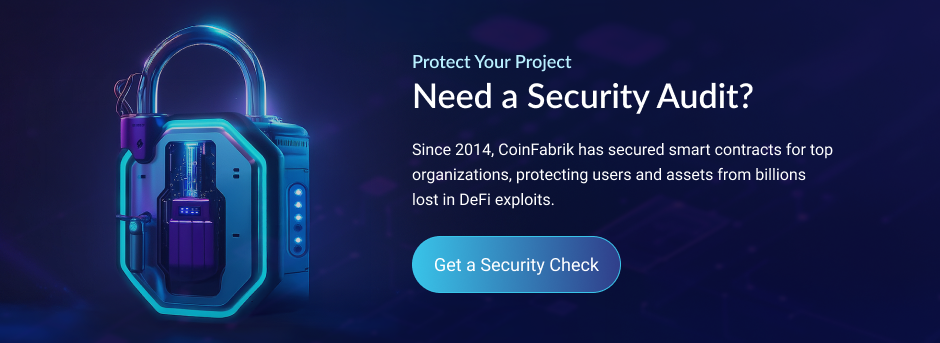Code Analysis and Smart Contract Auditing
There are many Smart Contract Auditing Techniques in software development, especially in critical systems like blockchain platforms, static code analysis and smart contract auditing are essential for ensuring code security and quality. While static code analysis identifies vulnerabilities and issues in source code, smart contract auditing focuses on securing blockchain-based protocols. Therefore, this article explores how these practices work together to deliver robust and secure solutions in complex environments.
What is Static and Dynamic Code Analysis?
Static code analysis is a technique that examines source code without executing it to identify errors, security vulnerabilities, and quality issues. Consequently, this practice enables developers to detect problems early in the development cycle, preventing costly failures and improving software quality. Key areas addressed by static code analysis include:
On the other hand, dynamic code analysis complements this by evaluating a program’s behavior during execution. It involves running the code in a controlled environment to identify runtime issues such as memory leaks, unexpected crashes, and logical errors. As a result, this approach provides insights into how the code operates under different scenarios, ensuring it performs as intended and meets runtime requirements.
Key areas addressed by code analysis include:
- Code Errors: Such as syntax or logic problems that cause incorrect or unexpected behavior.
- Security Vulnerabilities: For example, injection flaws, buffer overflows, or access control weaknesses.
- Standards Compliance: Verification of coding best practices and adherence to established guidelines.
- Performance Issues: Identification of inefficient, redundant code or resource-heavy operations.
- Programming Errors: Such as incorrect variable handling, null references, or infinite loops.
- Coding Standard Violations: Deviations from predefined conventions that ensure consistency and maintainability.
By integrating code analysis into development processes, teams can maintain cleaner, more secure codebases and minimize risks before advancing to critical phases like testing or deployment.
On the other hand, smart contract auditing ensures the security of decentralized protocols on blockchain and distributed ledger systems. It involves third-party evaluation of project specifications and source code, with a focus on identifying weaknesses and vulnerabilities. Auditors, therefore, provide actionable solutions to mitigate risks and prevent future exploits. Given the immutable nature of blockchain, ensuring the correctness of the code prior to deployment is critical to prevent severe consequences, such as financial losses or system vulnerabilities.
Static code analysis is a critical component of smart contract auditing. By applying both automated and manual techniques, audits leverage static analysis capabilities to detect common vulnerabilities. While static code analysis offers a quick, automated overview of issues, audits go further by performing thorough manual reviews that consider the contract’s context, logic, and interactions with other components.
Key Features of Effective Analysis and Auditing Tools
To ensure effective processes, the tools used in these practices should provide:
- Automation and Manual Reviews: A combination that identifies common issues quickly while allowing experts to analyze more complex cases.
- Detection of Critical Vulnerabilities: The ability to uncover problems like reentrancy, overflows, or defective access controls.
- Clear and Actionable Reports: Detailed documentation with problem descriptions, severity levels, and specific recommendations.
- Ease of Use: Intuitive interfaces and integration with development environments to encourage adoption.
- Continuous Monitoring: Tools that allow regular analysis even after deployment, adapting to emerging threats.
Methodology
Code analysis evaluates the internal structure, logic, and quality of software code to identify bugs, inefficiencies, and code vulnerabilities. Unlike audits, it focuses on examining code behavior and adherence to best practices rather than compliance or governance. Furthermore, code analysis often involves automated tools, static checks, and dynamic runtime evaluations.
In contrast, a smart contract audit focuses on the operations and control processes of distributed ledger systems. The goal is to ensure the security, reliability, compliance, and performance of smart contracts. However, auditing distributed systems requires addressing unique challenges, such as peer-to-peer networks, distributed virtual machines (DVMs), and consensus protocols.
Preparation
The first step in code analysis involves defining technical specifications focused on the code’s structure, algorithms, and expected behavior. Consequently, this document serves as a guide to evaluate the efficiency, correctness, and potential vulnerabilities of the code, emphasizing internal logic rather than broader compliance or governance aspects.
Similarly, the first step in the audit process involves creating a specification document detailing functional requirements, architecture, and the contract’s logic. This serves as a baseline for auditors to ensure the contract performs as intended while also addressing compliance, governance, and security in the broader system context.
Report
Code analysis reports provide detailed insights into code quality. Findings are typically categorized as errors, warnings, or suggestions, focusing on technical improvements. Unlike audit reports, which address compliance, governance, and overall system risk, code analysis prioritizes internal code optimization and logic validation. As a result, the final report is often a downloadable CSV file containing a list of identified issues and recommendations.
On the other hand, smart contract audit reports classify findings by severity: Critical, High, Medium, Low, and Informational. These categories, therefore, help standardize evaluations based on factors such as impact, likelihood of exploitation, and complexity.



